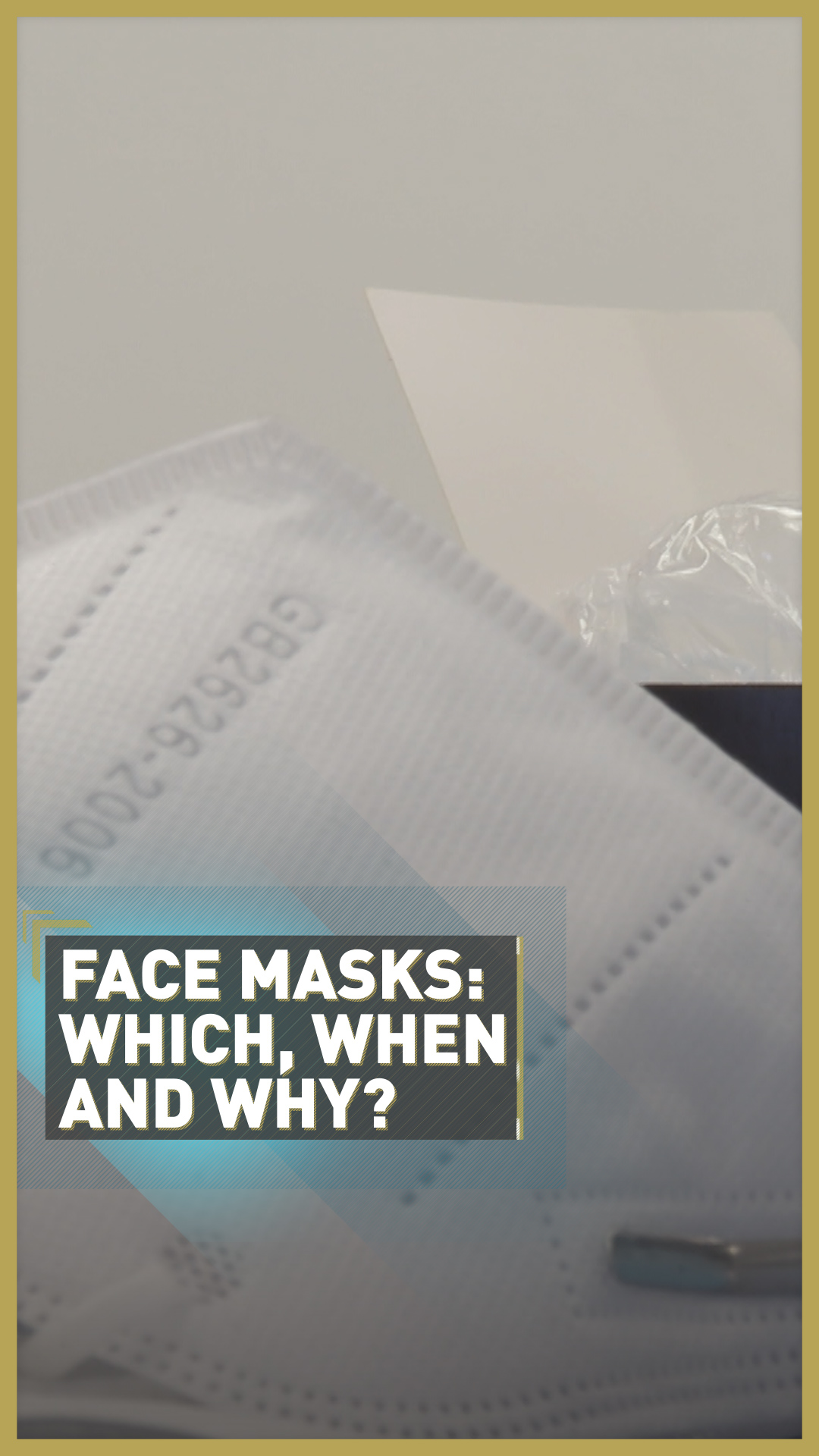Nothing says that we're living through a pandemic more than face masks. They were once a rare sight in Europe, but since the global outbreak of COVID-19 our relationship with face masks has gone from almost non-existent to suddenly intimate, essential – and uncomfortable.
Since lockdowns have been eased around the world and countries made the use of face coverings mandatory in different circumstances, the demand for face masks has exploded. The market is huge, with a variety so large it can be confusing.
04:18

Why do we need face masks?
According to Simon Kolstoe, senior lecturer at the School of Health and Care Professions at the UK's University of Portsmouth, part of the confusion around face masks is that authorities weren't clear enough from the start about why we need them.
"Towards the beginning of the coronavirus pandemic there was obviously this big concern about protecting medical staff in hospitals and ensuring there was appropriate PPE or personal protective equipment available for medical staff," he explains. "So there was a lot of concern to avoid the public panic-buying face masks."
But the argument for people to wear face masks isn't about protecting themselves, but about preventing patients who might be asymptomatic from spreading the virus to other people.
"Tests have shown that when you breathe, that when you blow, your breath goes about a meter, two meters away from your body. This is one of the rationales behind the two-meter physical distancing.
"However, obviously, if you wear something over your face, you have a breath-diverting device, a mask diverting your breath, you're pushing your breath over the body at the top of your head and thus if you are asymptomatic and you do have coronavirus, you're not spreading the virus particles as far."
Which ones are most effective?
With so many different type of face masks on sale, the market might be difficult to navigate. But Kolstoe has a foolproof method of testing the efficiency of face masks.
"One really good way of testing a face mask, to find out how effective it is at actually diverting your breath, is to simply light a match and then try to blow out the match through the face mask," he says.
We tested this with nine different type of face masks, and Kolstoe found N95 masks were the best for efficiency and fit. Your average dust mask, though it fits very comfortably, isn't very robust and efficient in diverting your breath.
Other things to look for are a tight fit (possibly with a metal wire nose clip), a robust fabric and possibly multiple layers of protection, and when present, look for a stamp of approval by a significant authority – for example in the EU, the ones CE marked in accordance with the essential requirements of Directive 93/42/EEC on medical devices.
Why are we so resistant to wearing face masks?
Despite several tests proving the importance of face masks in preventing the spread of the virus, there is still a lot of resistance in Europe to wearing them.
Kolstoe thinks it depends on the way we traditionally interact with each other and the way we read emotions in other people. "There was a paper published a few years ago that showed that people in Western cultures tend to look at the mouth when they're trying to interpret emotions," he says.
"If you're trying to see if someone is happy, you might look to see if they're smiling or angry from the shape of the mouth, whilst people in more eastern countries tend to look at the eyes to look at emotion as well.
"And therefore, it seems to make sense that in cultures that are more used to looking at the mouth when they're looking at other people, they might have more resistance to wearing a face mask compared to other cultures that might interpret emotions through the eyes."